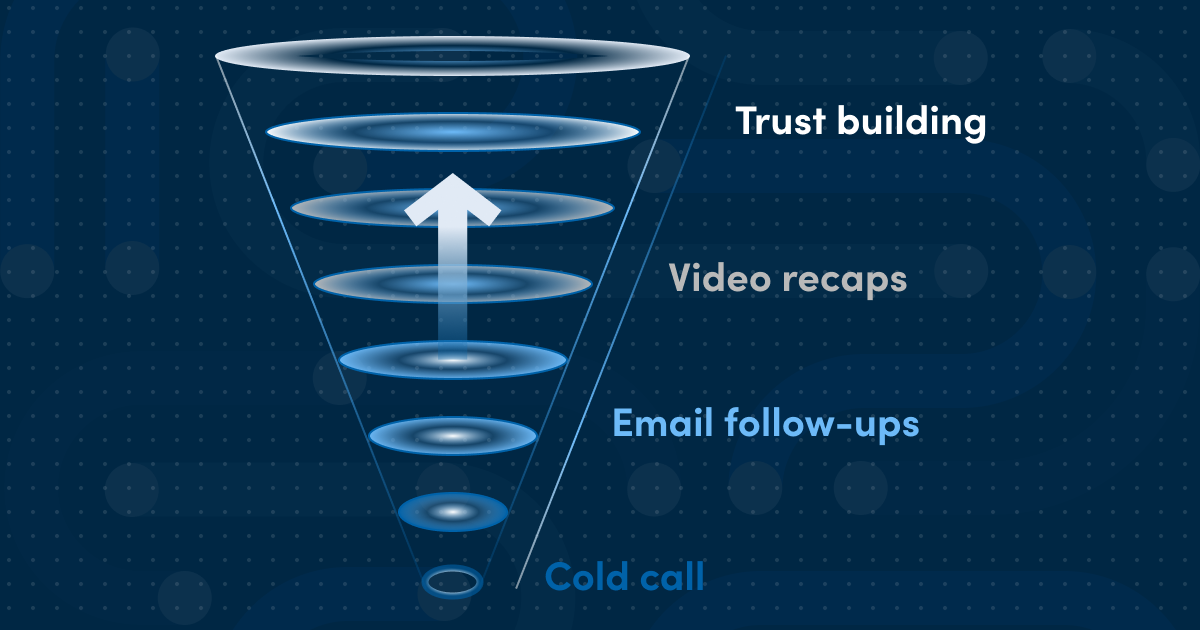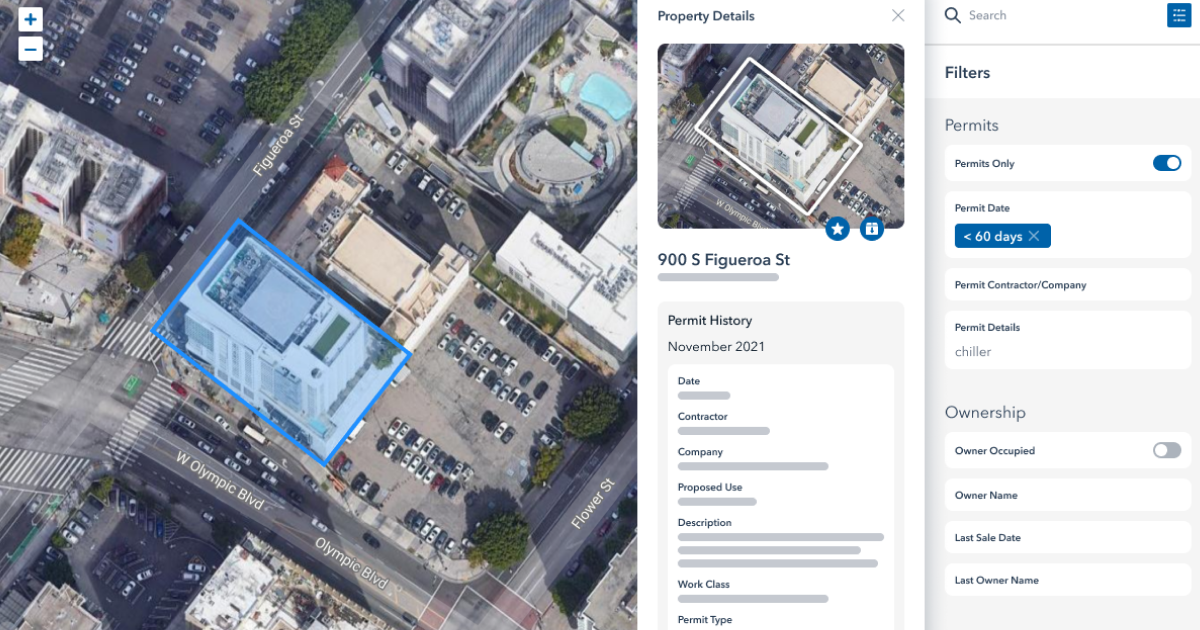Why B2B Cold Calls Still Work in 2025
If you lead sales for a commercial HVAC, janitorial, roofing, or solar business, cold calling probably still lives somewhere in your weekly rhythm. But let’s be honest—today’s buyers don’t answer unknown numbers out of curiosity. In fact, modern smartphones filter out unknown numbers without the user even seeing them.
No, today, building owners, managers, and facilities staff pick up when they believe the person calling has something valuable to offer.
Previously, when landlines were in every building, recipients didn’t know who was calling until they picked up the phone. Today, they can see who it is and sometimes even where you’re calling from.
This presents a real shift in the way we need to prepare for a call, and it means that cold calls in 2025 aren’t about high-volume dialing. They’re about making smarter, more relevant contact with the right person, at the right building, at the perfect time, and with the right message.
In other words, the best reps aren’t calling just to check in. They’re calling because something changed—a permit was pulled, a building expanded, or a decision-maker took on a new role. These aren’t “cold calls” as much as strategic entry points into a conversation.
Rethinking the Cold Calling Strategy for Commercial Services

Cold calling used to be a grind—hundreds of dials, canned scripts, and gatekeeper roadblocks. But as sales tools and buyer expectations evolved, so did the definition of an effective cold outreach strategy.
Previously, it was a numbers game: more calls equaled more appointments. In 2025, personalization is non-negotiable, and it has to be contextual. A good cold caller knows how to reference signals, public information (like a recent renovation or industry trend), and building details without making the prospect feel surveilled. That’s where property intelligence software comes in.
Leveraging Property Intelligence for Effective Cold Calling
Property intelligence platforms aggregate and analyze a wealth of data to provide sales teams with actionable insights. For instance, Convex offers comprehensive property intelligence data, including:
Building-specific data: Details such as square footage, HVAC age, and permit history are readily available.
Decision-maker contact information: Access to contacts like facilities managers, owners, and property directors streamlines the outreach process.
Buying signals: Signals monitors buyer’s digital behavior to analyze when prospects are looking up commercial services and solutions.
By utilizing such platforms, sales representatives can significantly reduce the time spent on research and increase the effectiveness of their outreach.
According to Salesforce, sales representatives spend only 28% of their week actively selling, with the remaining 72% consumed by non-selling tasks such as deal management, data entry, and administrative duties.
On the other hand, Convex can reduce the average research time per account from two hours to just 3–5 minutes using data to create a warm outreach environment.
This shift in prospecting doesn’t just save time (which is still the most valuable thing we have), it also reduces rejection, building trust from the first sentence.
Day-in-the-Life: A Better Cold Calling Workflow
Now, you may be thinking, “What does that actually look like for a business development representative on a daily basis?” Let’s use some example data to showcase what a great cold calling day looks like for a rep using Convex.
Like most reps, Convex users start their morning looking at a dashboard, but this one has a map of all the properties in their territory as well as active buying signals at the building level. This means that if a building owner or manager is looking for cleaning or janitorial services, their signal strength goes up, prioritizing them as warm leads for outreach.
You filter for the properties that fit your services; for example, buildings over 100K square feet in manufacturing, healthcare, and education that appear to have aging systems or recently pulled permits.
You review the property details in Atlas, get a birds-eye view of the roof, and note the number of HVAC units and scope out the ownership history. You review the contact for the head of facilities.
Then you make the call. You open with context:
“Hi [Prospect’s Name], this is [Your Name] from [Your Company]. I noticed that [Building Name] recently filed a permit for HVAC upgrades. We specialize in assisting facilities like yours in managing aging systems and planning efficient upgrades. Are you currently evaluating external vendors for this project?”
Because you’ve done the prep, this doesn’t feel like a cold call. It feels like a warm, relevant check-in. And it gives the prospect the space to engage.
Or, even better, you drop a voicemail to them with a similar message but close with:
“I’ll send you a quick email tomorrow with more details. If it piques your interest, feel free to reply; if not, no worries. Looking forward to connecting.”
How to Personalize Your Cold Calling Script Without Being Creepy
It’s one thing to personalize—it’s another to go too far. Don’t mention things that they may find personal. Focus instead on public information, LinkedIn posts, company press releases, and news about the company, but the best option will always be building context. The reason for this is that it’s relevant to them right now.
When in doubt:
Talk about the building, not the person.
Reference public data, not personal information.
Offer insight, but don’t be intrusive.
Here’s an example:
“I noticed your facility at 100 Main St. recently wrapped a buildout. That’s often when teams evaluate service and maintenance vendors. Is that something on your radar?”
You're not assuming anything. You're asking based on a real-world signal. That’s personalization with purpose.
Cold Call Objection Handling: Advanced Tactics That Keep the Door Open

Every great cold caller hears objections. What separates the pros from the amateurs is how they respond without resistance. Keep in mind that amateurs try to get to “Yes.” Pros respond with curiosity and adaptability, transforming resistance into opportunity.
Common Objections and Strategic Responses
“We already have a vendor.”
“Most teams do. We're often a second-look option—especially when budgets tighten or contract terms shift. Would it help if I sent over a comparison sheet for reference?”
“Not interested.”
“Totally fair. Is that because you're under contract, or is there something specific you're solving internally right now?”
“How did you get my info?”
“We work with commercial service teams across [city/region], and your building showed up in a recent market activity report. Happy to remove you if it's not a fit—but figured it was worth reaching out.”
The Underdog Sales Approach
Recently, I’ve become obsessed with the cold calling approach of Giulio Segantini. Giulio is a sales trainer who helps local businesses achieve better quality results by changing their sales approach and perspective. Giulio emphasizes the importance of embracing objections as a natural part of the sales process. His methodology includes:
Acknowledgment: Recognize the objection without resistance.
Clarification: Seek to understand the underlying concern.
Value Proposition: Offer insights or solutions that address the specific objection.
For instance, when calling a CEO directly, Giulio respectfully says:
“Would it absolutely ruin your day if I told you that this is a cold call?”
Immediately, he disarms the CEO by admitting exactly why he’s called - and when he’s asked to follow up with an email, he says, “I understand you’re very busy, but would you mind if I asked you one more question?” After getting the CEO’s approval, he says, “Would you trust a sales trainer to train your team that wasn’t able to book a meeting on the call?”
You hear the CEO laugh on the other end of the phone and then proceed to set an appointment. This technique maintains professionalism while gently navigating through initial resistance.
Of course, I realized that you’re not selling sales training, but using techniques like this tends to work better. They meet the moment for what it is, without turning up the pressure and creating resistance.
Building a Resilient Mindset
Teaching your team resilience is everything in cold calling. Handling objections effectively also involves cultivating a resilient mindset. Giulio advises sales professionals to:
Stay Curious: View each objection as an opportunity to learn more about the prospect’s needs.
Maintain Composure: Keep emotions in check to respond thoughtfully.
Practice Regularly: Engage in role-playing scenarios to build confidence and adaptability.
By integrating these strategies, sales teams can transform objections into meaningful conversations, fostering trust and opening doors to potential opportunities.
Handle objections with curiosity. Treat every answer as insight, not rejection. Although there’s no way around the fact that rejection is part of the job.
Timing Your Cold Outreach for Maximum Impact
When it comes to cold calling, timing is a strategy.
Multiple studies have identified specific days and times that yield higher engagement rates:
Late Morning (10:00–11:00 AM): Prospects are typically settled into their workday but not yet overwhelmed, making them more receptive to calls.
Late Afternoon (4:00–5:00 PM): As the workday winds down, decision-makers may have more availability to engage in conversations.
Mid-Week Days (Wednesday and Thursday): These days have been shown to have higher success rates for cold calling, possibly due to mid-week productivity peaks.
Why? These days and times generally have fewer scheduled meetings, and late afternoons often catch decision-makers between tasks.
Tools like Convex Signals layer on another dimension—intent-based timing. If signal strength has just increased or a permit has just been posted, that’s your moment. You’re not calling into the void—you’re showing up exactly when they’re thinking about the problem you solve.
Post-Call Best Practices: Turning Cold Contacts Into Warm Deals

The most successful sales representatives understand that the real work begins after the initial call. While many may stop at the first sign of resistance, top performers implement a comprehensive post-call strategy to nurture leads and build lasting relationships.
The Persistence Gap
Beyond Codes research indicates that 44% of salespeople give up after just one follow-up attempt, despite the fact that 80% of successful sales require five or more follow-ups. This highlights a significant opportunity for those willing to persevere.
Effective Post-Call Actions
To capitalize on this opportunity, consider the following steps after each call:
Document the Interaction: Record detailed notes in your CRM, outlining the conversation and any agreed-upon next steps.
Initiate a Personalized Follow-Up Sequence: Tailor your follow-up communications to address the specific needs and interests of the prospect.
Send a Video Recap: Utilize tools like Loom to provide a brief video summary of your discussion, highlighting key insights and proposed solutions.
Schedule Reminders: Set calendar alerts to prompt timely follow-ups, ensuring you remain top-of-mind without being intrusive.
Building Trust Over Time
Cold calling isn’t solely about immediate conversions; it’s about initiating conversations that, over time, foster trust and lead to successful partnerships. Each “not now” should be viewed as a “maybe later,” and with consistent, value-driven follow-ups, many of these maybes can transform into affirmative decisions.
CRM Integration: Tracking Cold Call Metrics That Actually Matter
It’s not just about how many cold calls you make. It’s about knowing:
Call-to-meeting ratio
Connect rates by time of day
Follow-up effectiveness by sequence
Convex integrates with platforms like Salesforce and HubSpot to help you track and improve these cold outreach metrics in real time.
Sales managers can then coach based on insight, not assumption, improving team performance and consistency across territories.
Final Thoughts: Cold Calling Isn’t Outdated—Your Approach Might Be
Cold calling still works in 2025. But only if you approach it like a strategist, not a script reader.
If your team is still:
Googling for contact info
Driving around to scout properties manually
Calling without knowing who’s likely to buy
Then it’s not a sales problem. It’s a data problem.
Convex helps you:
Surface buyer intent with Signals
Understand your territory with Atlas
Find and reach decision-makers instantly
Automate personalized outreach with Generative AI email drafts and phone scripts based on data
Schedule a free demo to see how commercial sales teams are transforming their cold calling and building a sales pipeline that doesn’t quit.
Share





